As the end of the financial year approaches, it’s a timely reminder for anyone drawing an income from an Account-Based Pension (ABP) to double-check they’ve met their minimum annual withdrawal requirement.
ABPs are a key tool for providing tax-effective income in retirement. But they come with rules — and missing a key one can have unintended tax or compliance consequences. Many Retirement Essentials members have shared questions about how it all works, so we’ve included answers to these questions to help clarify common concerns.
Understanding minimum annual withdrawal requirements
Each year, individuals with an ABP must withdraw a minimum percentage of their balance. This is calculated based upon their age and their ABP account balance as at 1 July of that financial year. (i.e the balance at 1 July 2024 is the one being used to calculate this amount for this financial year which ends on 30 June.) These percentages are designed to gradually draw down retirement savings over time.
For example, someone aged 65–74 must withdraw at least 5% of their ABP balance; this increases to 6% once they turn 75.
A little-known fact:
It’s important to note that lump sum withdrawals don’t count towards satisfying the minimum. The required payment must come from your ABP as an income stream.
Here are some common questions from readers…
Julie asks:
Q. Do I have to start withdrawing from my super now I’ve retired but my husband is still working?
A: As Julie’s question shows, the trigger point that makes withdrawing from super a requirement can be unclear. Super rules have changed over the years, and there is no official retirement age in Australia.
The minimum withdrawal rules only apply once your super is in an Account-Based Pension. If your money is still in an accumulation account, there’s no obligation to draw anything out. As the Retirement Essentials Head of the Customer Service Team, Steven Sadler, explained:
“You do not have to start withdrawing — the choice is yours.” That said, starting an Account-Based Pension has pros and cons – particularly in relation to tax – worth discussing with an adviser.
Barb asks:
Q. If I haven’t retired but get a small Age Pension, do I still need to meet a minimum drawdown?
A. Barbara wanted to know whether receiving Age Pension income triggered any drawdown rules. The Age Pension and Account-Based Pensions (ABPs) are separate. If you haven’t started an ABP, the minimum drawdown rule doesn’t apply. But if you have started one — even if you’re still working or only receiving a small Age Pension — you do need to meet the required minimum.
Why some people withdraw the minimum…
…and why that’s not always best!
Many retirees stick to the minimum drawdown amount, assuming it’s the recommended or ideal level to withdraw each year. But it’s not a recommendation — it’s a regulatory floor, not a financial plan.
The right amount to withdraw depends upon your retirement income mix, lifestyle needs, spending patterns, and broader financial goals. There’s no maximum withdrawal limit — you can even withdraw 100% of your ABP if needed (though that comes with other consequences).
Matching your withdrawal strategy with your financial objectives while ensuring that you meet the necessary requirements is the aim. If how to combine these steps remains unclear, it may assist to seek further support from a qualified adviser.
The risks of missing your minimum
Failing to meet the minimum withdrawal requirement from your ABP can have serious tax and compliance consequences — especially for those with a Self-Managed Super Fund (SMSF).
If the minimum isn’t withdrawn by 30 June, the income stream is considered to have ceased at the start of the financial year for tax purposes. That can mean:
- The fund can no longer claim tax exemptions on earnings which are considered Exempt Current Pension Income (ECPI)
- Withdrawals may be treated as lump sums, not ABP income
- The ABP must be restructured, and a new one commenced
- There may be reporting obligations to the ATO, including Transfer Balance Account adjustments
For SMSF trustees, these consequences fall directly on your shoulders — and fixing the issue is often messy, stressful, and time-sensitive. You may need to:
- Revalue fund assets at market value for the new financial year or date of recommencement.
- Calculate new taxable and tax-free components
- Lodge new reports with the ATO
- Recommence the ABP or retirement income stream from scratch
There is a narrow exception to these rules, but only if the underpayment was due to an honest mistake or events outside your control, and you make a catch-up payment promptly. This exception can generally only be self-assessed once. In future years, you must apply directly to the ATO.
If you’re in a retail or industry fund, this is less of a concern — most funds automatically calculate and pay your minimum. But SMSF members must stay vigilant. As Ray commented in a recent SMSF query about tax and beneficiary planning, these issues don’t just affect your income — they can also affect your estate.
Centrelink and the income assessment puzzle
One of the most misunderstood aspects of retirement planning is how Centrelink assesses income from an Account-Based Pension (ABP).
Many people assume Centrelink looks at how much income they’re actually drawing, but the amount counted for the income test depends on when the ABP started. For ABPs that commenced after 31 December 2014, Centrelink applies deeming rules based on the account balance, while ABPs that started earlier than this are classed as ‘grandfathered’ and some or all income paid each year may be assessable.
Lance asked us about his ‘Choice income account’ and whether taking regular withdrawals would reduce his Age Pension. The answer surprised him — because even though he was drawing more than the minimum, the impact on his Age Pension was small. That’s because deeming rates are currently low, and Centrelink doesn’t assess your actual ABP or income stream payments.
This is one of the key reasons people mistakenly believe they’re ineligible for the Age Pension — when in fact, they may qualify. So if you’re drawing a decent income from super, don’t assume that you won’t qualify. You may be entitled to more than you think.
Understanding how deeming works can help you better manage your expectations, plan your cash flow, and make the most of any entitlements available to you.
How to meet the rules
If you haven’t reviewed your ABP withdrawals lately, now is the time.
- Check with your fund that the correct amount has been paid this financial year
- Don’t leave it until late June — all transactions need to be processed before 30 June
- SMSF members in particular should double-check — if you are a trustee, then you are responsible
- If you’re unsure, your superannuation fund provider can confirm whether you’ve met the minimum or if you are in an SMFS talk to your administrator or accountant to help rectify any shortfall.
- If you’re drawing less than you need to fund your lifestyle, you might want to revisit your broader retirement strategy
John asks:
One member, John raised a very common question:
“Will I pay tax on the withdrawals?”
The answer depends on your age, the tax components of your balance, and the type of account you’re drawing from. That’s another reason to ensure that you are fully across all details of your own situation.
Final thoughts
Minimum withdrawal rules might seem like just another piece of annoying red tape -but overlooking them can have real consequences. From losing valuable tax exemptions to affecting your Age Pension eligibility, it’s a small detail that can carry significant weight.
As one of our Retirement Essentials members, Marcia, pointed out in her comment, some of the Age Pension rules can feel punitive. But more clarity now can save a lot of pain later.
If you’re unsure about your current ABP withdrawals or how they affect your entitlements, consider booking a Retirement Advice Consultation or an Entitlements Consultation. A little support now can help safeguard your financial future.
We’d love to hear from you
- Have you reviewed your ABP or income stream payments to make sure you’ve met your minimum withdrawal this year?
- Are you confident you understand how Centrelink assesses your retirement income?






I am just getting a full pension based on the standard income and assets test and meet the criteria required. I only have $44,000 in super. How do I know if I am on an Accounts Based Pension – do I need to see Centrelink to enquire>
Hi Katharina, thank you for reaching out for further clarity. An account based pension is something you would set up with your super fund so you should contact them (not Centrelink) to double check how yours is set up.
Investment Advisor as well as Super recommends to open Account-Based Pension after I finish working to get extra money to my age pension. Now I’m reading that getting that 5% from my super may affect my Age Pension. Can you explain how? Will I get less pension because I will also draw that 5% from my super?
Hi Elizabeth, we can definitely have a consultation with you to discuss how Centrelink will assess your specific situation. You can make a booking HERE.